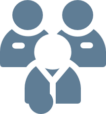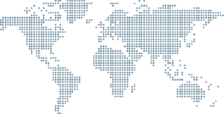Today, less than 22% of the 18.5K recognized diseases in the world have FDA-approved treatments. About half of the diseases without cures are considered rare, meaning they impact fewer than 65 out of 100k people worldwide, a category that includes Huntington’s disease, sickle cell disease and many forms of cancer.
While the combined magnitude of rare diseases is enormous, impacting 300-400M people globally, over 95% of rare diseases have no treatment and they receive a fraction of R&D dollars, just 14% of NIH funding in 2023. The severity is devastating: 50-80% of people with rare diseases are children, 30% of whom die before age 5. And then there are undertreated diseases — diseases with expensive, burdensome or inaccessible treatments that need better cures. For example, ALS has two approved treatments, but neither substantially extends lives.
But many existing drugs could be repurposed to treat these diseases. For instance, an inflammatory disease and a certain type of cancer might share common mechanisms in the body (e.g., related proteins and genes responsible for the disease). Drugs known to treat one disease by targeting a specific mechanism could work on other diseases with similar mechanisms.



